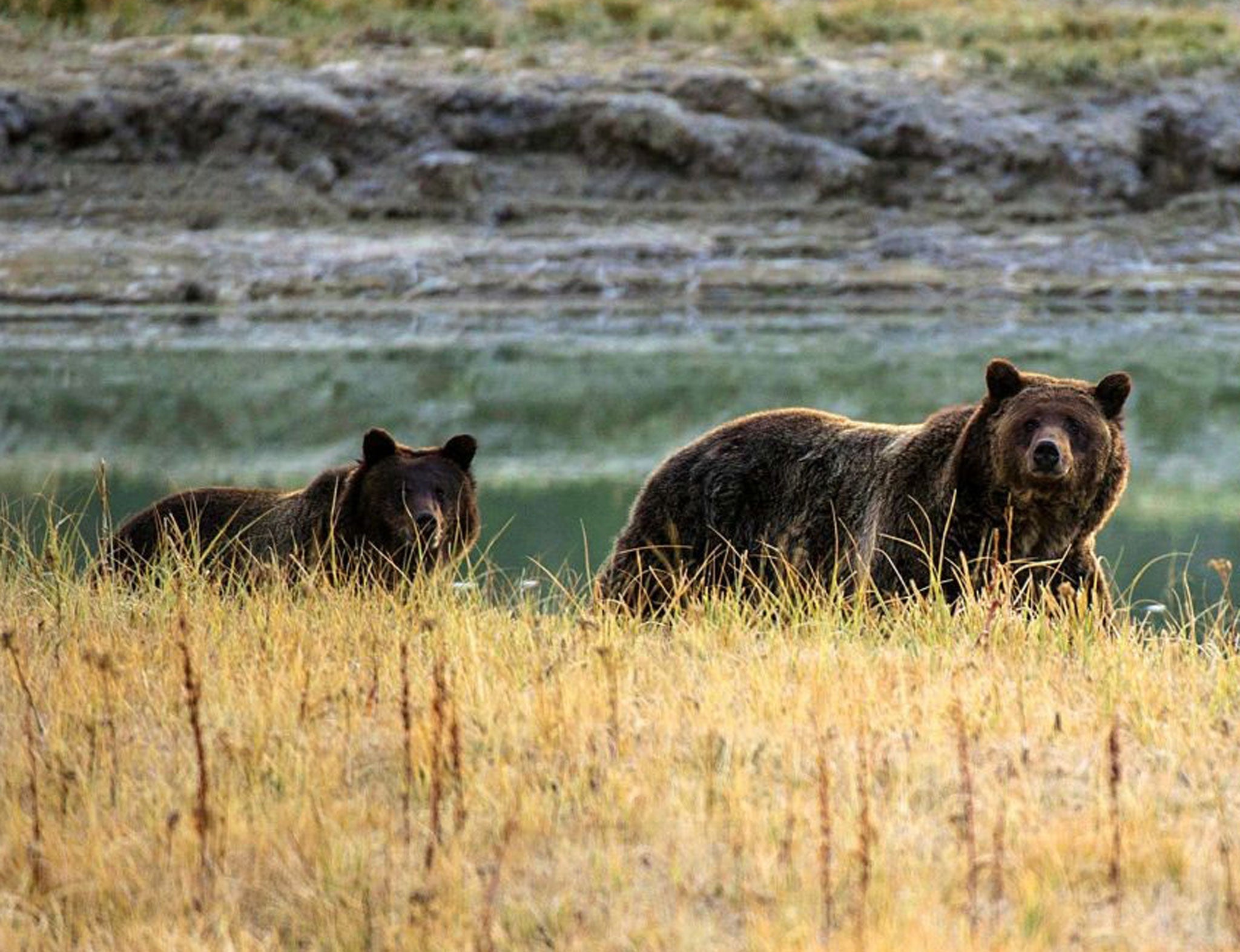Grizzly Bears resurgent in Yellowstone National Park after return of wolves
The wolves have controlled the number of elk, which were eating all-important berries

The re-introduction of wolves to Yellowstone National Park in the United States has had an unexpected benefit – it has boosted the diet of a rival top predator, the grizzly bear.
Scientists have found that the berries on which grizzlies gorge themselves before winter have increased dramatically since wolves were re-introduced into Yellowstone in order to control the population of elk, which have seriously overgrazed the park over the past few decades.
Wolves have not just reduced the elk population but created what ecologists have called “a landscape of fear” that keeps elks away from open spaces, allowing the regeneration of shrubs and bushes and their nutritious berries. A study found that the number of berries available to bears in August has doubled in recent years.
“Wild fruit is typically can important part of grizzly bear diet, especially in late summer when they are trying to gain weight as rapidly as possible before winter hibernation,” said Professor William Ripple of Oregon State University, the lead author of the study published in the Journal of Animal Ecology.
“Berries are one part of a diverse food source that aids bear survival and reproduction, and at certain times of the year can be more than half their diet in many places in North America,” Professor Ripple said.
Wolves were hunted to extinction in Yellowstone and the surrounding area in the 1900s and over the past century the vegetation has changed significantly as a result of overgrazing by elk. The reintroduction of wolves, which began in 1995, has led to a resurgence of young aspen and willowtrees along with berry-producing shrubs and tall, herbaceous plants.
Yellowstone, an area of outstanding natural beauty, has a wide variety of nutritious berries, such as serviceberry, chokecherry, buffaloberry, twinberry and huckleberry, which have doubled in quantity over the past two decades, the scientists found.
Grizzly bears are ominivores and eat meat as well as vegetation. In spring they will also hunt young elk, but it is the abundance of berries in late summer that can be a crucial factor in enabling them to survive a harsh winter.
Subscribe to Independent Premium to bookmark this article
Want to bookmark your favourite articles and stories to read or reference later? Start your Independent Premium subscription today.

Join our commenting forum
Join thought-provoking conversations, follow other Independent readers and see their replies